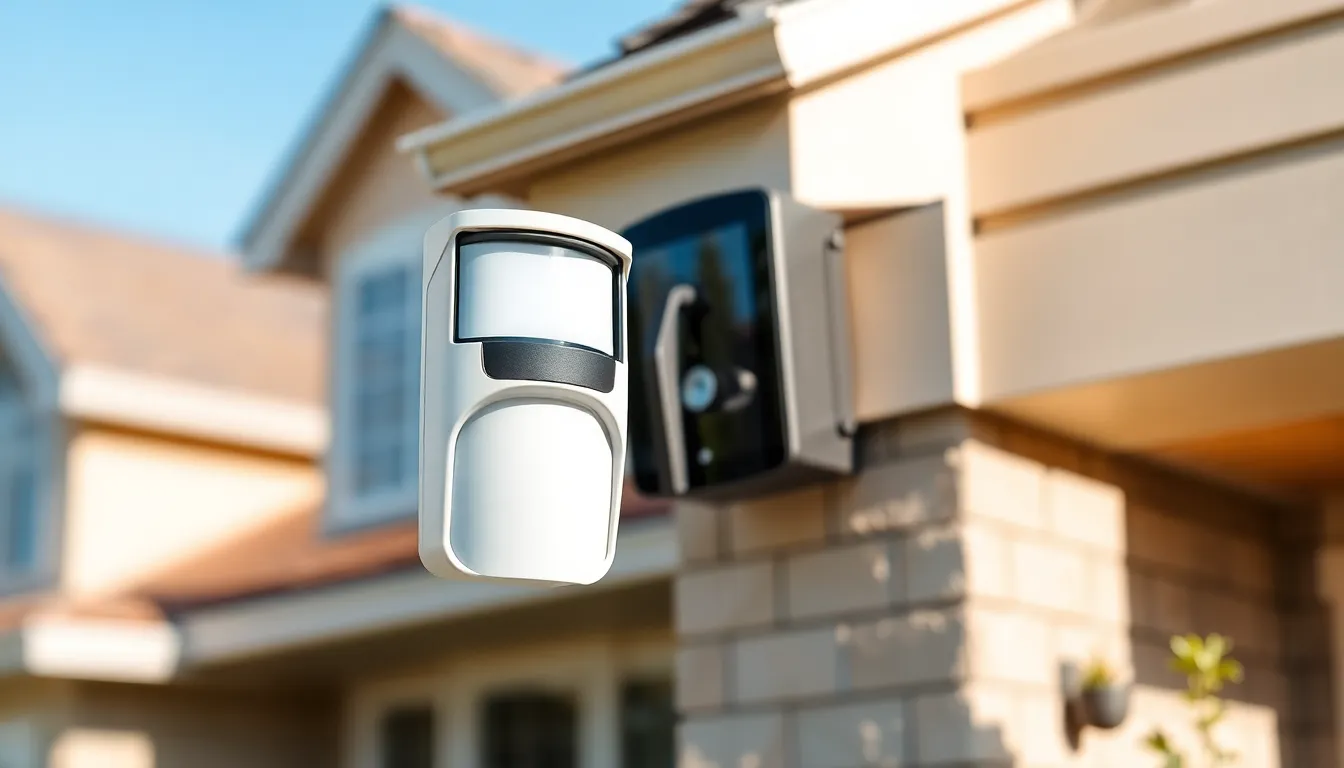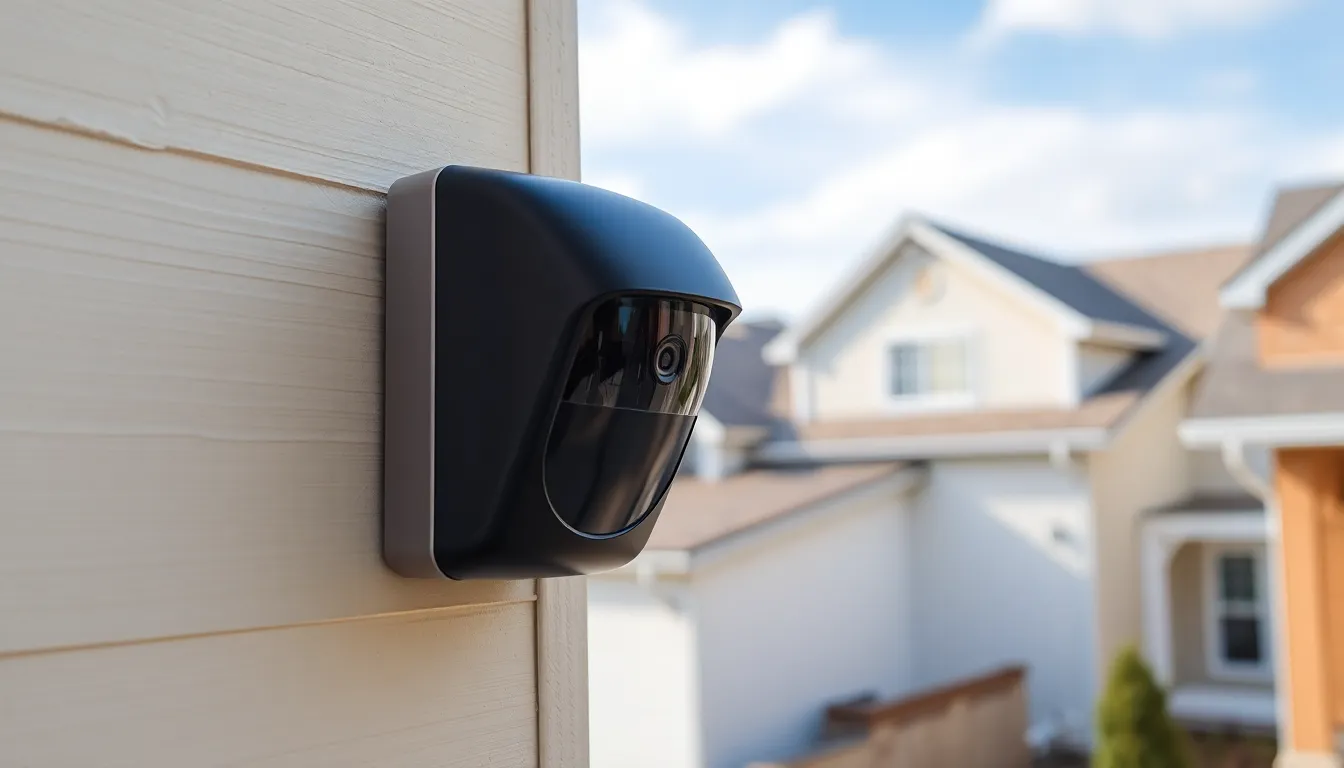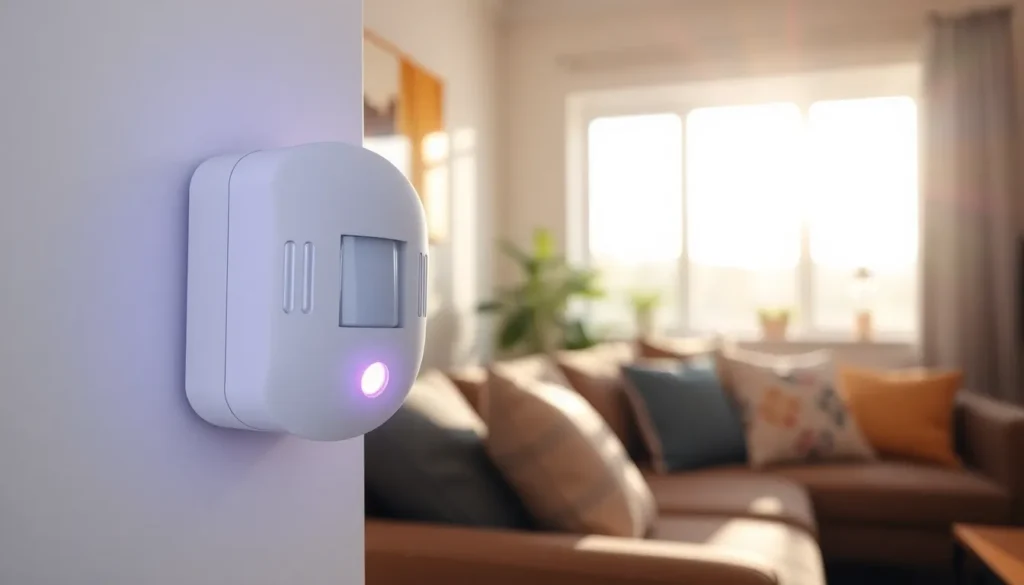Table of Contents
ToggleIn a world where home security is more important than ever, motion sensor alarms are like the vigilant watchdogs of your abode. They’re not just fancy gadgets; they’re the unsung heroes that keep unwanted guests at bay. Imagine a device that springs into action the moment someone dares to invade your personal space—like a ninja that’s always on duty but without the black pajamas.
Overview Of Motion Sensor Alarms
Motion sensor alarms are vital components in modern home security systems. They detect movement in designated areas, triggering alerts when unauthorized motion occurs. Commonly integrated into smart home setups, these devices enhance security by providing real-time notifications.
Many models utilize infrared technology to identify body heat. This feature ensures accurate motion detection, even in low-light conditions. Some systems allow users to customize the sensitivity settings, reducing false alarms caused by pets or moving plants.
Wireless options make installation straightforward and flexible. With battery-operated units, homeowners can install sensors in various locations without complicated wiring. The adaptability of motion sensor alarms contributes significantly to their popularity.
Integration with smartphone applications is another advantage. Users can monitor activity remotely, receiving instant alerts no matter their location. This connectivity ensures peace of mind, especially when away from home.
High-quality motion sensor alarms often come with additional features. Some devices offer two-way audio, allowing homeowners to communicate with visitors or deter intruders. Video capabilities are also available, enabling homeowners to visually verify alarms through security footage.
Choosing reliable brands enhances overall performance. Reputable manufacturers provide warranties and customer support, ensuring satisfaction with the product. Consumer reviews can guide users in making informed decisions when selecting a motion sensor alarm.
Overall, motion sensor alarms represent a proactive approach to home security. By integrating these devices into security systems, homeowners establish a robust defense against potential threats.
Benefits Of Motion Sensor Alarms For Home


Motion sensor alarms offer several advantages that enhance home security while providing additional benefits. These include improved safety measures and cost savings.
Enhanced Security
Enhanced security represents a primary advantage of motion sensor alarms. Incorporating advanced detection technology allows these devices to identify unauthorized movement instantly. Alarms sound immediately when an intrusion occurs, alerting homeowners and deterring potential burglars. Many models feature adjustable sensitivity settings, ensuring accurate detection without frequent false alarms. Integrating motion sensor alarms with home automation systems increases security further. Homeowners gain remote monitoring capabilities, receiving instant alerts on smartphones about unusual activity. This immediate response helps protect personal spaces effectively.
Cost-Effectiveness
Cost-effectiveness contributes significantly to the appeal of motion sensor alarms. Initial investments in these security devices often lead to substantial long-term savings. Insurance companies frequently offer discounts on premiums for homes equipped with proper security measures, including motion sensors. Maintenance costs are typically low, especially for wireless models, which eliminate the need for complex wiring. Users enjoy the flexibility of customizing settings to minimize unnecessary alerts, enhancing overall efficiency. The potential to prevent burglaries or property damage translates into significant financial savings. Investing in quality motion detectors reduces vulnerability and protects valuable assets effectively.
Types Of Motion Sensor Alarms
Different types of motion sensor alarms enhance home security, each utilizing distinct technologies for optimal detection capabilities.
Passive Infrared Sensors
Passive infrared sensors use heat emitted by objects to detect movement. These sensors identify body heat from humans and animals, making them effective for outdoor settings. Detection ranges typically vary from 20 to 50 feet, depending on the model. When something moves within their field of vision, these sensors trigger alarms or notifications. Their low power consumption makes them suitable for long-term use in homes. Effective deployment includes positioning them away from direct sunlight to minimize false triggers.
Microwave Sensors
Microwave sensors emit microwave pulses that bounce off objects, detecting movement based on changes in the reflected signals. Typically, these sensors cover larger areas than passive infrared sensors, often extending beyond 50 feet. They can monitor both internal and external environments effectively. In some cases, their ability to penetrate walls offers enhanced coverage, ensuring no corner is left unmonitored. Adjustments to sensitivity settings help minimize false alarms, making microwave sensors ideal for dynamic environments.
Dual Technology Sensors
Dual technology sensors combine passive infrared and microwave sensing technologies for enhanced security. Utilizing both methods, they significantly reduce false alarms compared to using a single technology. When movement is detected by both sensors, the alarm activates, ensuring a more accurate response. Coverage usually aligns with the higher range of either technology, maximizing detection capability. These sensors prove to be particularly effective in complex spaces where variations in environmental conditions may lead to inaccuracies.
Features To Consider When Choosing A Motion Sensor Alarm
Understanding key features is essential for selecting the right motion sensor alarm. Various elements influence performance, usability, and overall effectiveness.
Detection Range
Detection range is a critical factor in ensuring comprehensive coverage. Alarms with a range of 20 to 50 feet meet most residential needs. Wider detection ranges are typically more beneficial for larger properties. For instance, microwave sensors excel in this aspect, offering extended coverage beyond 50 feet. Reliability also increases with advanced models that combine technologies for more accurate detection. Homeowners must consider their specific environment when evaluating the required range.
Sensitivity Settings
Sensitivity settings play a vital role in minimizing false alarms. Adjusting these settings helps tailor the motion sensor’s response to environmental factors. High sensitivity levels trigger alerts for minor movements, such as pets or small animals. Lower sensitivity settings prevent unnecessary activations while still responding to human motion. Advanced systems often allow users to customize these settings remotely, enhancing convenience. Homeowners should align sensitivity preferences with their lifestyle to maintain security without disruption.
Popular Motion Sensor Alarm Models
Several motion sensor alarm models stand out for home security. Ring Floodlight Cam offers high-resolution video along with motion detection. Homeowners appreciate the two-way audio feature for communication.
Arlo Pro 4 excels in flexibility and wireless setup. Users benefit from 2K HDR video quality and night vision capabilities. Customizable settings allow optimal detection based on specific needs.
SimpliSafe Motion Sensor integrates seamlessly with broader security systems. This model emphasizes ease of installation and user-friendly operation. Alerts sent to smartphones keep homeowners informed in real-time.
Wyze Cam v3 provides an affordable option without sacrificing quality. It includes color night vision and motion detection alerts. Cost-conscious users find it suitable for budget setups while still enhancing security.
Google Nest Cam operates efficiently indoors and outdoors. Its design aids in recognizing familiar faces and distinguishing between people and pets. Innovative features include cloud storage for video clips and detailed notifications.
The Yale Smart Home Alarm emphasizes automation throughout your premises. This model connects with other smart devices, providing a holistic security solution. Voice control through smart assistants simplifies operation for users.
A table summarizing these models can enhance clarity and comparison.
| Motion Sensor Model | Key Features | Coverage Area |
|---|---|---|
| Ring Floodlight Cam | HD video, two-way audio | Up to 30 feet |
| Arlo Pro 4 | 2K HDR, wireless design | Up to 70 feet |
| SimpliSafe Motion Sensor | Easy installation, smartphone alerts | Up to 30 feet |
| Wyze Cam v3 | Color night vision, affordability | Up to 30 feet |
| Google Nest Cam | Face recognition, cloud storage | Up to 100 feet |
| Yale Smart Home Alarm | Smart home integration, voice control | Up to 30 feet |
These popular models reflect diverse preferences and security needs. Each offers unique advantages, supporting effective home protection.





